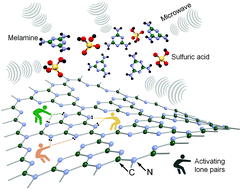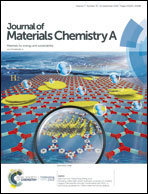Protonation and microwave-assisted heating induced excitation of lone-pair electrons in graphitic carbon nitride for increased photocatalytic hydrogen generation†
Abstract
Graphitic carbon nitride (g-C3N4) with pronounced excitation of lone pairs benefits from extended visible light absorption, which thus enhances its photocatalytic hydrogen (H2) generation activity. However, achieving such lone pair excitation in g-C3N4 remains a grand challenge. Here we report on the synthesis of g-C3N4 with remarkable lone pair excitation through thermolysis of protonated melamine via a facile microwave-assisted heating. The g-C3N4 photocatalyst after optimizing the proton concentration offers a highest H2 generation rate of 21.4 μmol h−1, which is nearly 7 times higher than that of g-C3N4 created from unprotonated melamine under identical conditions (3.2 μmol h−1). Furthermore, active H2 generation at 490 nm light irradiation (2.3 μmol h−1) is realized owing to the lone pair excitation. This work shows the great potential of protonation combined with microwave-assisted heating for activating the lone pair excitation in g-C3N4 for increased photocatalytic performance.



 Please wait while we load your content...
Please wait while we load your content...